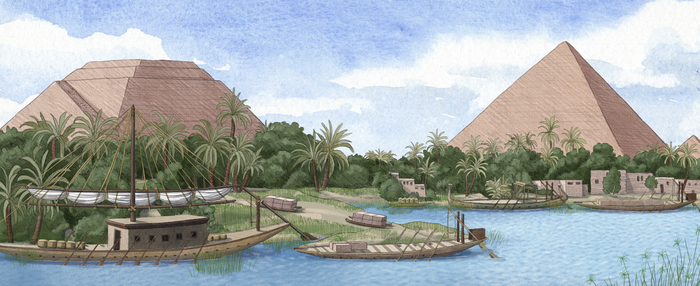The three majestic pyramids of the necropolis of Giza, Cheops, Chefren and Menkaure, located on the western outskirts of Cairo, in Egypt, were built thanks to a now disappeared branch of the Nile river, which allowed the transport of the necessary materials: thanks to granules of ancient pollen, it was in fact possible to trace the variations in the water levels of this stretch for over 8,000 years of Egyptian dynastic history, discovering that at the time of the construction of the pyramids, between 2686 and 2160 BC, the watercourse was still navigable.
The discovery, published in the journal of the US National Academy of Sciences (PNAS), is the result of the work of a group of researchers led by the European Center for Research and Teaching of Environmental Geosciences (Cerege), in France.
The researchers, led by Hader Sheisha, examined the pollen grains present in soil cores extracted from the current alluvial plain that once housed the branch of the Nile: in this way they reconstructed the type of vegetation present at the time, which reveals the raising and lowering of the waters that occurred over time.
The data obtained reveal that the water level increased a lot during the so-called African Wet Period (Ahp), between about 14,800 and 5,500 years ago, which saw the replacement of much of the Sahara desert territory with grasses, trees and lakes and it was caused by changes in the Earth's orbit around the sun.
Subsequently, the disappeared arm of the Nile reduced again, but remained navigable for some time, thus allowing the transport of goods and making it possible to build the pyramids of Giza.
According to the authors of the study, the discovery opens an important window on the environmental conditions that favored the construction of the pharaonic monuments considered one of the wonders of the ancient world.

